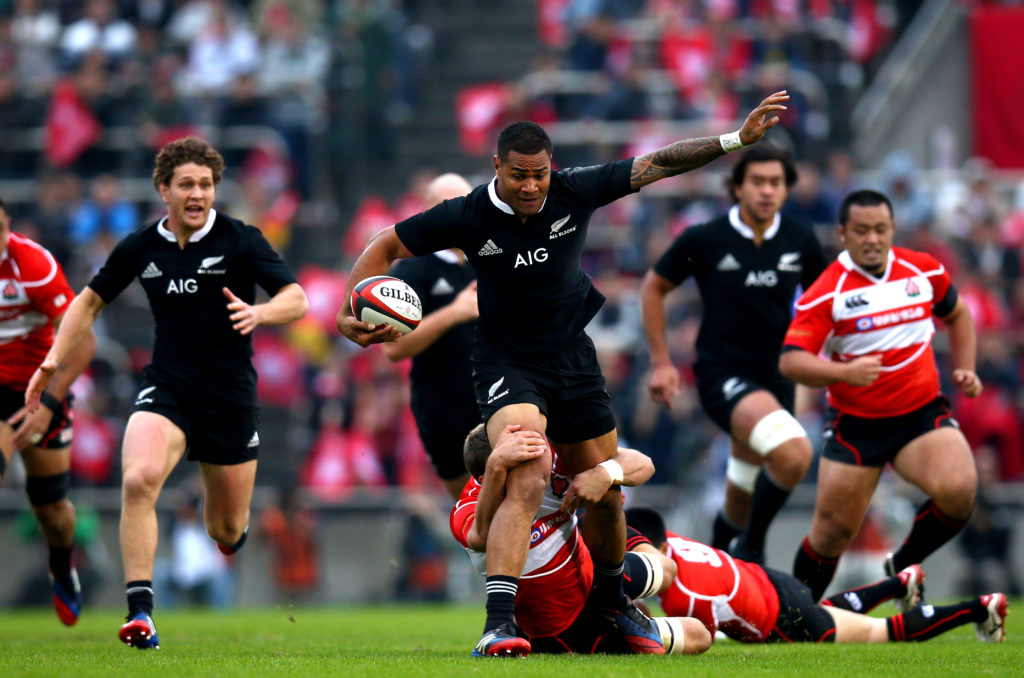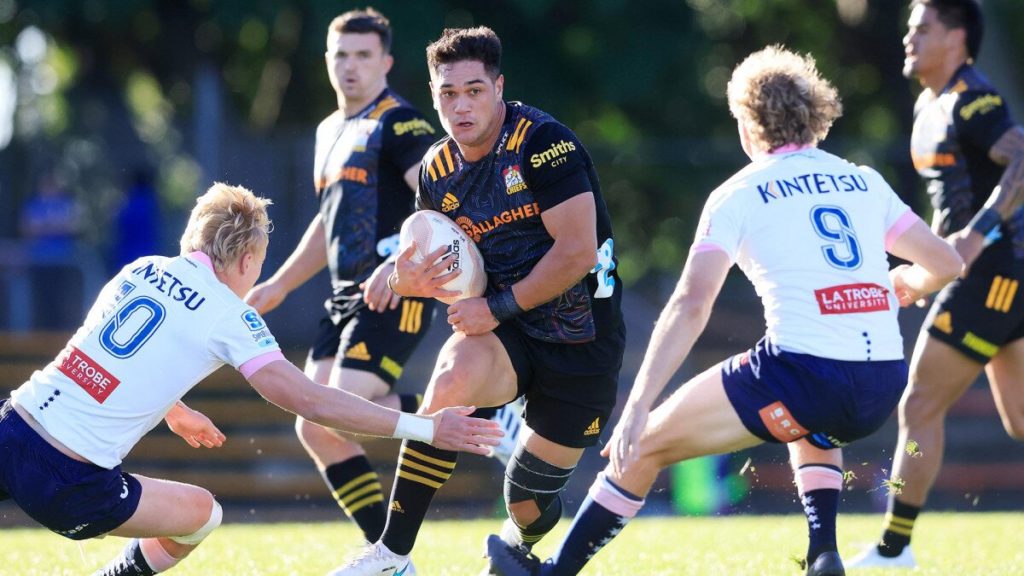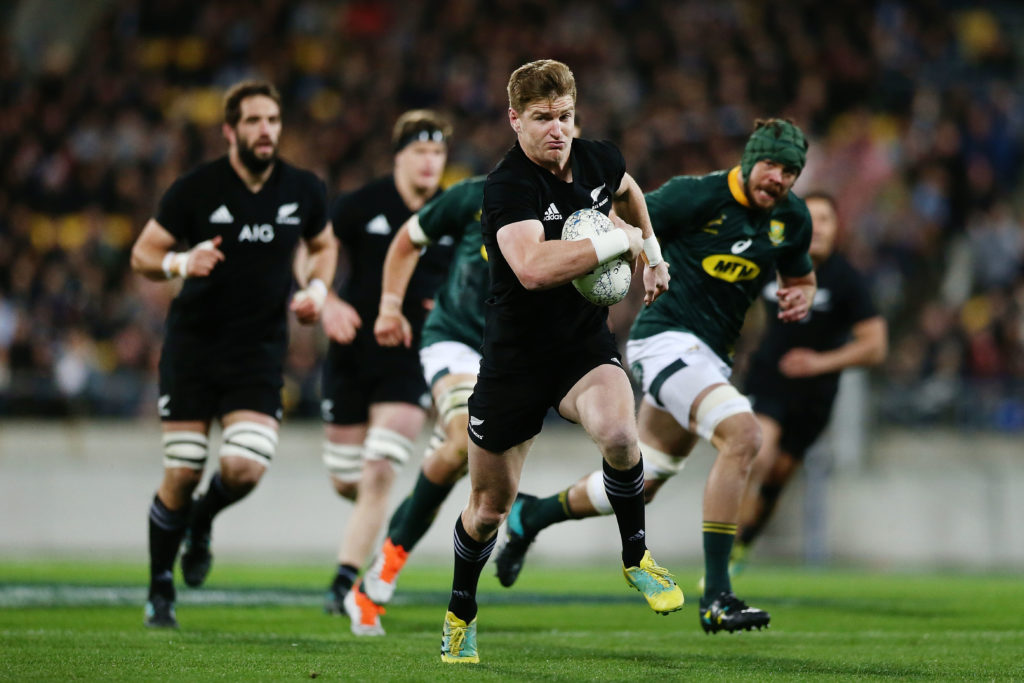In late October 2013, a group of New Zealand media representatives covering the All Blacks end of year tour, found themselves discussing how they thought the selection of the team would evolve during the next two years.
They were in Tokyo and it was a few days out from a number of lesser known players being given an opportunity to stake their claim to test spots. There was debate about how many of the new caps that had been picked to play Japan would be keepers and how many were destined to never quite make it.
In the end, it was agreed that everyone round the table that night should write down the possible starting team of the All Blacks should they make the World Cup final in 2015 and every player in the country was match fit.
There were a number of unanimous selections: the obvious players such as Brodie Retallick, Sam Whitelock, Richie McCaw, Kieran Read, Aaron Smith, Ma’a Nonu, Conrad Smith and Julian Savea were selected by everyone.
Not everyone thought Daniel Carter would make it that far given his injury history; Ben Smith was in most teams, as was Dane Coles and Owen Franks.

The biggest area of surprise and divergence was at blindside flanker. At that time, Liam Messam was the incumbent No 6, with Steven Luatua the emerging force.
A few weeks before the All Blacks had set off on that tour, Jerome Kaino confirmed he would be returning to the Blues in 2014 after spending 2012 and 2013 playing club rugby in Japan.
He would be 31 when he came home and having had three major shoulder surgeries, not everyone was convinced he’d prove to be the player he’d been before he left.
The votes were split almost evenly, with some predicting Luatua would grow into an unstoppable force; others backing Kaino to come good and a smaller group confident Messam could hold his place.
In the end, Kaino came back from Japan in better shape than he left and won back his No 6 jersey, with Luatua strangely going backwards in 2014 to the point where he was dropped.
In a quirk of fate, blindside would still be one of the hardest positions to predict as there remains multiple options, none of whom have quite convinced as long-term certainties. Perhaps, though, the tougher business will be forecasting who will end up in the All Blacks No 12 jersey.
All of this is worth recalling as it is an exercise that, were it to be repeated, would inevitably lead to an equally diverse range of views about what the preferred All Blacks starting team will look like in 2023.
In a quirk of fate, blindside would still be one of the hardest positions to predict as there remains multiple options, none of whom have quite convinced as long-term certainties.
Perhaps, though, the tougher business will be forecasting who will end up in the All Blacks No 12 jersey. That’s a position the All Blacks, as has been well documented, can’t find what they are looking for.
It has been a problem for them stretching back to 2018. Throughout 2017 they had Sonny Bill Williams in solid if not spectacular form, but that was his last injury free year and since then, the All Blacks have been left a touch disappointed by what they have seen from those asked to stake a claim.
Injury to Jack Goodhue and Ngani Laumape’s decision to head to France has meant the All Blacks have called up David Havili and Quinn Tupaea for the July tests.

Both have played well in Super Rugby, but Havili, despite having played plenty of rugby in the midfield, feels more at home at fullback and Tupaea has played most of his rugby at centre.
Tupaea is arguably the better long-term bet given his age, his size and the type of skills he brings, but he is so raw and inexperienced that it could take years to build and develop him into the rounded player he’ll need to be.
“He knows what he’s good at,” Foster said of Tupaea after naming him to start against Tonga in the first test of 2021. “He knows his strengths and we are backing him to do that. He doesn’t hesitate with his carry and he’s instinctive with creating play off his contact work. There will be a learning curve in terms of system stuff and defence stuff.”
No doubt, he’d feature on a few lists as the All Blacks No 12 come the World Cup in 2023. Havili and Goodhue would also be picked by some, but the name missing from the debate is Jordie Barrett.
Many armchair selectors will have him in their team at fullback, possibly some believing he’ll be on the wing as he has been for much of his test career to date. And that’s because he’s largely seen now as a back three player.
For all that [Barrett’s] done at fullback and won his place in the All Blacks squad by mostly playing there, the majority of his test rugby has seen him picked on the wing.
While he’s been shifted around by the Hurricanes these last few years, he’s probably played his best rugby at that level wearing No 15.
Certainly last year and this, the Hurricanes have tried to keep him at fullback and it is a position in which he looks at home.
He is brave under the high ball. He can kick prodigious distances, tackle like he knows he’s the last line of defence and he’s also been increasingly willing to come into the line and make himself the first receiver.
And yet, for all that he’s done at fullback and won his place in the All Blacks squad by mostly playing there, the majority of his test rugby has seen him picked on the wing.
He made his debut at fullback and played there for the All Blacks until September 2018. It was against South Africa in Wellington that year that he exposed his Achilles Heel.

For all his obvious talent, Barrett was prone to rash moments. He could be impetuous, throwing as he did that night, an ill-advised quick lineout that handed the Boks a soft try and pathway back into the test.
That was the straw that broke the camel’s back: the most damaging of a number of mistakes Barrett had made that year and one that led to the All Blacks coaching team deciding to leave him out of the side for a period.
Head coach Steve Hansen felt Barrett needed some time out, to be around the All Blacks but not playing.
“He’s a very confident young man, is our Jordie,” Hansen explained. “He has every right to be confident, he’s a very skilled player.
“It’s not his confidence that we have to get right, it’s just his understanding, his pace of how he wants to play. He wants to do everything at 100 miles an hour.”
What coach Ian Foster likes about the youngest Barrett in the squad is that he backs himself. He’s a positive player – willing to shoulder the burden and take responsibility when things need to happen. Some players hide under pressure – not Barrett.
When Barrett did return to the starting team, it was as a wing, scoring four tries against Italy in the final test of 2018. It was a position in which he looked more comfortable and has predominantly been used there by the All Blacks since – playing one other test at fullback last year in Brisbane and one at first-five against Namibia at the World Cup.
And that’s the thing to note about Barrett, while he has played the majority of his club football these past few years at fullback, he’s not been used there by the All Blacks, who believe his skill-set is broad enough to be utilised anywhere in the backline.
What coach Ian Foster likes about the youngest Barrett in the squad is that he backs himself. He’s a positive player – willing to shoulder the burden and take responsibility when things need to happen. Some players hide under pressure – not Barrett, and this was something Foster made a point of acknowledging last year.
“He’s been a kid on the big stage and because of his talent, he’s played at a higher level very young and played some big test matches very young. The thing is we still want to keep him in that space. I don’t want him to go into his shell and I want him to be influential on our park.”
And so it seems impossible not to make a link between Barrett’s skill-set, a desire to have him heavily involved, and the fact that the All Blacks have no natural, obvious contender to play at second five.

Could many birds be killed with one stone by shifting Barrett to No 12? The argument stacks up. The All Blacks want a physical specimen there. That’s a tick as Barrett is 1.96m and 105kg. He can run direct, angled lines because he does this a lot for the Hurricanes when he often pops up as first receiver.
He can use his height to get his hands free to work a good off-loading game and he can boot the ball the veritable country mile.
The two questions which are arguably most critical to answer are whether he can deliver the requisite support, communication and tactical guidance his first five needs and how easily and quickly he could settle into the position.
Having played a test at the World Cup as a first five, he has a fair idea of what it takes to be a playmaker and his all-round decision making is something he has been working on since he was temporarily decommissioned in 2018.
“Clearly it was an area in the past where perhaps he made a few errors,” Foster said last year about Barrett. “Is it his strength? No it is not. But is he working on it? Yes. He’s working hard in that space.”
Playing No 15 has happened over the last couple of years but I’m just keeping my options open – I just want to be good enough to play both and to fit into the team wherever possible.
Jordie Barrett on his preferred position
As for how quickly he could adapt… Many still feel No 12 is Barrett’s natural home, having played much of his school rugby there and indeed for the New Zealand Under 20 team.
He seems ambivalent, however, to which he prefers and since becoming a full-time professional in 2017 has never stated a preference.
“When I was at the under-20 level, I was playing 12 and I enjoyed it there, purely because it was more an extension from 10 where I played at school, and I was able to get physical and be a bit more involved in the middle of the park and get more touches,” Barrett told The XV last year. “But not too sure why [the shift to fullback] came about, it was just more of a natural transition moving out to 15. I enjoyed kicking the ball, catching the ball and having a bit more of a free spirit to roam so it’s just basically where I’ve ended up.
“I’m not too sure if there’s any thought of going back to the midfield. I do enjoy it at 15 and it’s nice to have been able to have a good run of performances in one jersey for a while.”
And that still seems to be his view. He’s happy at 15, happy at 12 and driven not by any personal sense of what’s right for him but simply how he can get on the field and be involved.
He was named on the bench for the first test of the year, covering fullback, wing and midfield and there is a sense building that given the lack of certainty offered by the specialist midfielders, it may be that a cameo appearance off the bench by Barrett is enough to persuade the selectors to think more seriously about using him at No 12.



Comments
Join free and tell us what you really think!
Sign up for free